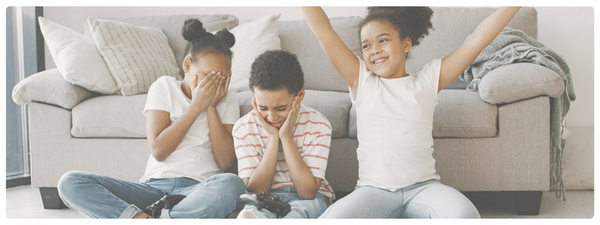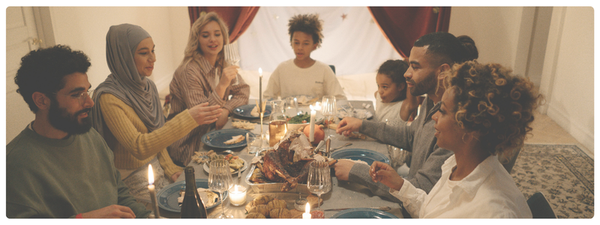Many parents have questions and concerns about the amount of time their children are using screens. But is this the right way to think about screen time for kids?
As it turns out, it can be more beneficial to think about screen time quality instead of quantity.
Of course, setting time and content limits on screen time is important (and encouraged!). However, as screens are a nearly unavoidable aspect of parenting in the digital age, we are here to help parents alleviate some stress by helping them choose “better” screen time options.
The Nuance of "Better"
It is important to note we are using the word “better” in quotes because while it is a common way to describe different kinds of screen time activities, it oversimplifies a complex issue. What is “better” depends on the content, its context, and the communication we are having with our children in each unique moment.
These factors vary from person to person and day by day. Labeling one thing as “better” over another ignores these nuances. Because of this, it is much more useful to consider how screen time activities align with your family, your child, and their developmental needs.
Everyone can benefit from some time to relax with their favorite TV show, some time to video chat with their family, or dominate their younger brother in a friendly-but-maybe-not-so-friendly competitive video game (or is that just me?). But each of these activities are not going to be what is considered “better” all of the time.
As mindful digital parents, we should be having ongoing conversations about screen time and encouraging a variety of activities for our kids. Yet, with the prevalence and variety of screen time, the more relevant question to ask is about the quality, not strictly just the amount of time (quantity) spent on these devices.
A Magic Number for Screen Time?
Sorry to be the bearer of (possibly) disappointing news, but there’s no magic number of minutes, hours, or days in a week for kids to spend interacting with screens.
The best way to think about this is the framework of the digital diet, an idea I first heard about from Amy Orben, an experimental psychologist at the University of Cambridge.
What Qualifies as “Better” (Quality) Screen Time?
When thinking about how to foster quality (or “better”) screen time, we need to consider variety in the types of screen time available to our children. With the digital diet mindset, we can then start to think about these options in the same way we think about dietary nutrition.
Some types of screen time, like playing games, chatting with friends, or creating digital art are what we could consider the fruits and vegetables of the food pyramid. They have overt nutritional value and are activities we would likely encourage our children to participate in.

Other screen time activities, like passively scrolling through social media, are what we would consider to be less nourishing. While we all like to have a piece of chocolate from time to time — which is perfectly okay — the goal would be to aim for a balanced diet that isn’t about counting calories (,i.e., or minutes/hours of screen time), but rather prioritizes the primary food groups while maintaining variety.
As a parent, you’re likely already well-equipped to identify “better,” higher-quality screen time activities, which we can break out into a few categories. It’s easy to see the developmental advantages of screen time that encourages:
Interactive Learning and Skill Development
- Video games
- Educational apps for reading, math, science, or coding
- Documentaries and educational videos followed by discussion
- Virtual tours of museum exhibits or nature live streams
Creativity and Expression
- Digital drawing apps or art tutorial videos
- Music and video production tools
- Taking and editing photos or videos
Activity and Movement
- Exercise and dance games or videos
- Augmented reality apps that combine screens with real-world adventures
- Digital scoreboards or progress tracking of real-world games
Social and Emotional Development
- Video chatting with friends, family, and schoolmates
- Playing cooperative, team, or strategy online games
- Participating in online clubs around books or other interests
These are just some of the many examples of active screen time activities that have been found to have significant, positive impacts on child development. Think of them like the protein, fruits, vegetables, and whole grains of your digital diet.
These kinds of screen time activities are likely to be more developmentally valuable than passive options, such as endless scrolling through social or news feeds (though this can have value, too!).
So What Makes Healthy, High-Quality Screen Time “Better?”
Let’s take the analogy of nutrition a step further. Everyone’s digital diet is going to look different.
Just as some people react differently to certain foods or require more or less of different tiers of the pyramid, each child (and adult, for that matter) experiences screen time differently based on their personality, their environment, and the content they are consuming.
A digital diet approach means being intentional and mindful about the kinds of positive screen time activities we put on our plate, ensuring that they are adding value to our lives rather than replacing or displacing other activities. Healthy engagement with screens means treating them as just one of many tools in our digital parent toolbox.
Is a little sugar okay? Of course! But we want most of our calories to be coming from nutrient-dense foods.
As a temporary distraction (so you can cook dinner, for example), enriching entertainment, learning opportunities, or social connections, screens are a wonderful tool. The key is using screens for a specific purpose — and yes, fun and play count as very valid purposes!
So, if quality is a more important metric than quantity, how do we know the screen time our children are consuming is of “better” quality?
It Involves Learning
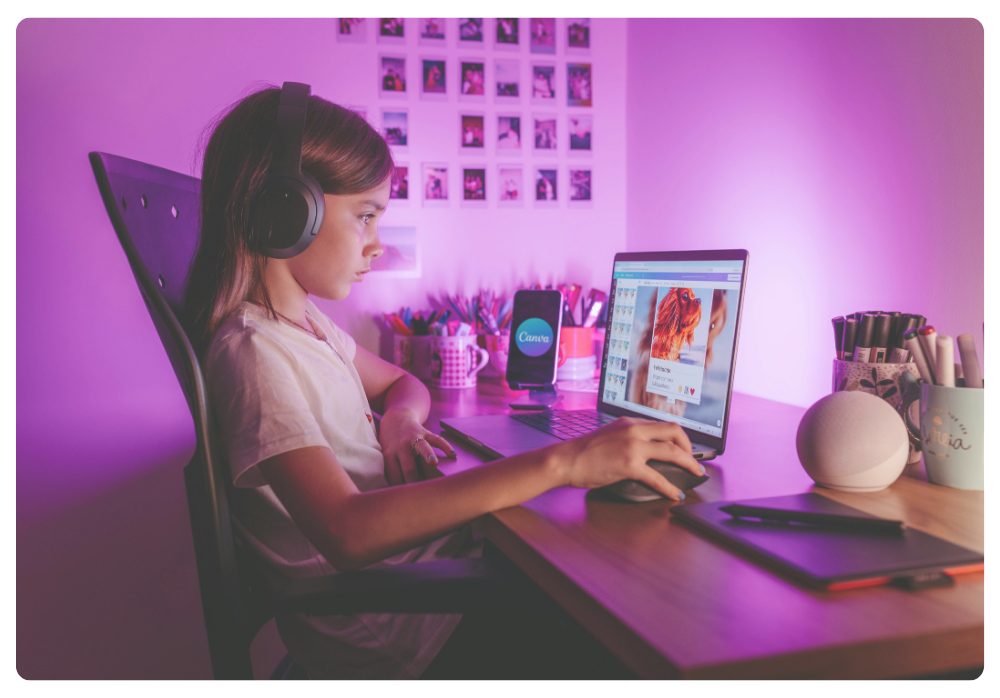
Now keep in mind that learning does not always look like learning.
For example, it might not be obvious that games like Tetris can help us hone our reaction time, our hand-eye coordination, critical thinking, and mental rotation skills (or perhaps even something more philosophical). Watching animated videos of songs on YouTube is teaching our little ones a whole lot about rhythm, beat, and reading (if the words are on the screen).
In many other cases, the learning aspect is obvious. If it’s not, look for variations of your kids’ favorite screen activities that give them a little more wisdom.
It Involves Play
Play and playfulness in our daily routine is critical throughout our lifespan, arguably more so in childhood. Play in and of itself is associated with reduced stress, improved mood, and the release of endorphins.
Video games can serve as tools for growth, learning, and connection. Through play, we can learn about history (With games like Civilization), civil engineering (with games like SimCity), or even game design itself.
Digital play can help spark imagination and perspective that’s valuable once the screen is off, too. Milestones reached in games and bonds built through multiplayer fun build self-esteem, confidence, and interpersonal skills.
It Involves Others
Doing things together with family, friends, and peers is the foundation of our social and emotional well-being. Shared experiences also help bring us together, increasing our sense of closeness and trust with others. And these benefits come whether we are socializing next to each other on a couch or through a screen with others located across the world.
Active vs. Passive Screen Time: Which is Better?
Active screen time involves active interaction through some kind of engagement from the user. Video games and educational apps are obvious examples, but online social activities, such as video chatting, would also qualify.
In contrast, passive screen time does not involve active participation. This kind of screen time is more about consumption and distraction than interaction. Examples of passive screen time include watching shows and movies or endlessly scrolling social media feeds.
To maintain a more balanced digital diet, we want to engage children to participate more actively than passively (i.e., quality over quantity) with their screen time. This is not to say passive screen time is not valuable, as passive scrolling or binge-watching can be a great way to relax from time to time.
While passive and active screen time have both been found to be associated with positive educational outcomes, active screen time has been more directly linked to a wider variety of positive after-effects. These include improved creative thinking, developmental skills, and improving mental well-being.
Screen Time Benefits: How it Can Lead to Better Developmental Outcomes
Thoughtfully curated and managed screen time for kids can foster:
- Learning a range of things, including new information and skills (see my video below)
- Creativity and expressiveness
- Social connection and friendship
- Physical health
- Mental well-being
- Civic participation, fine motor skills, teamwork and more
Knowing the advantages of screen-based activities can help parents feel better about their child’s screen use, too.
It’s worth reiterating the importance of balance, not just of “better” screen time options — but of turning the screen off for a while, too (we have to rest those eyes sometimes!).
Understand the Limits of Quality Screen Time
Can quality screen time become unhealthy, even if it’s one of the “better” choices? That’s a valid concern.
Back to our diet analogy, eating too much of anything can be problematic. Let’s talk about what healthy and unhealthy engagement looks like.
If screen time is the only (or overused) tool in the digital parent’s toolbox, even quality media can become unhealthy. If screens are used to avoid responsibilities or act as a regular babysitter, they start to lose their benefits.
Use these questions as a better screen time checklist than time limits alone to evaluate the role that screens are playing in your child’s life:
- Has a certain space or activity become the only thing consumed in your child’s digital diet?
- Is this space more chocolate than broccoli?
- Is your child avoiding activities they used to otherwise enjoy in preference for the use of screens?
- Has this been happening for a significant amount of time?
It’s probably okay to eat more chocolate over summer vacation as long as we bounce back to a balanced diet during the school year. The same approach makes sense around screens for kids, too.
You can also look for warning signs of problematic screen use, including:
- Losing interest in off-screen activities
- Changes in sleep
- Using screens as an emotional crutch
- Neglecting responsibilities or relationships
Another warning sign is when a child becomes increasingly frustrated or irritable when screen time is over. That’s why better screen time transitions are also a critical part of the digital diet.
Better Screen Time Transitions: How to Turn it Off
What if screen time transitions, or wrapping up your child’s digital session, looks more and more “unhealthy?”

Even for children who effectively balance screens with other activities and prioritize “better screen time,” transitions can be difficult. In fact, I would argue that the transition from on to off screens is the most common struggle that caregivers face when it comes to screens and kids (myself included!).
When talking about the transition off screens, I like to talk about donuts.
I love donuts. I love donuts so much. Apple fritters are my favorite, but I also wouldn’t say no to one covered in sprinkles. When I start eating a donut, as I’m enjoying the sugar and apples and sprinkles — if someone suddenly pulled that donut out from my hands as I was going in for another bite, I would be angry.
The same is true when you turn off a screen mid-watch. Your child is enjoying it, they are focused on it. They are expecting to have another “bite,” and then someone comes in and turns it off abruptly, so they are going to be upset.
Even when we tell our children, “Five more minutes,” the thing is, kids are not great at estimating time. They’re not really able to conceptualize or acknowledge what that passage of time feels like — especially when they’re engaged in an enjoyable activity.
Scaffolding for Better Screen Time Transitions
While there are a lot of guides out there to help parents teach children how to manage their time, a good place to start is with simple scaffolding. That is, helping your child start to learn what the passage of time feels like and how to slowly transition away from screens onto another activity.
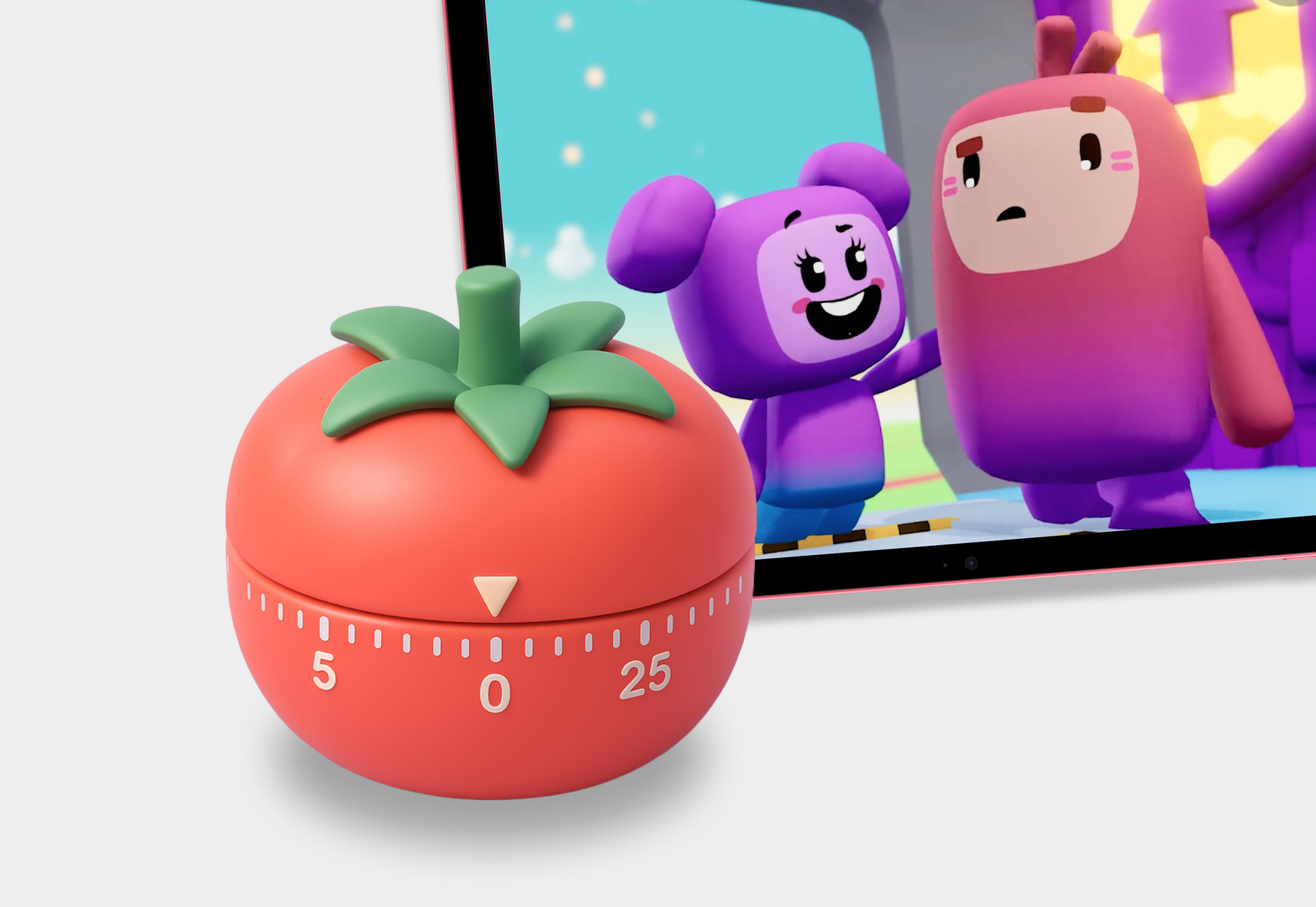
For example, if you are making dinner and you know it is going to be ready in 15 minutes, you can tell your child, “In 15 minutes, you will need to be off the television/tablet/video game and ready for dinner.”
After five minutes, let them know they have ten minutes.
After five more minutes, tell them five minutes left.
Then three.
Then one.
Bonus points if you have a visual timer that you can set in the room for them to see. This will help provide them with the scaffolding to register and acknowledge the passing of time. It helps them practice self-regulation and transition techniques on their own.
If they hear “three more minutes,” maybe they’ll make the decision not to start a second episode of their favorite show, knowing it is more than three minutes long. If when they hear “one minute,” they’ll understand they need to find a spot to save their game before logging off.
Will this work perfectly every time? Probably not. But it will start setting the framework (or, scaffold) to help instill these skills within your children and reinforce the boundaries around better screen time in your home.
A Better Approach to Screen Time: Quality Before Quantity
Ultimately, managing screen time is not about setting a strict limit on hours. It’s about fostering a balanced, intentional approach that prioritizes quality screen time.
As parents and caregivers, our role is to guide, not just restrict. A big part of that is helping children build the skills they need to navigate the digital world with a curated diet. With intention and balance, our children can learn to make better screen time decisions themselves, too.
Ready to learn more from Dr. Rachel Kowert, a research psychologist focused on digital play and Nurture’s lead digital parenting advisor? Head to The Parent’s Guide to Screen Time: What the Research Reveals.


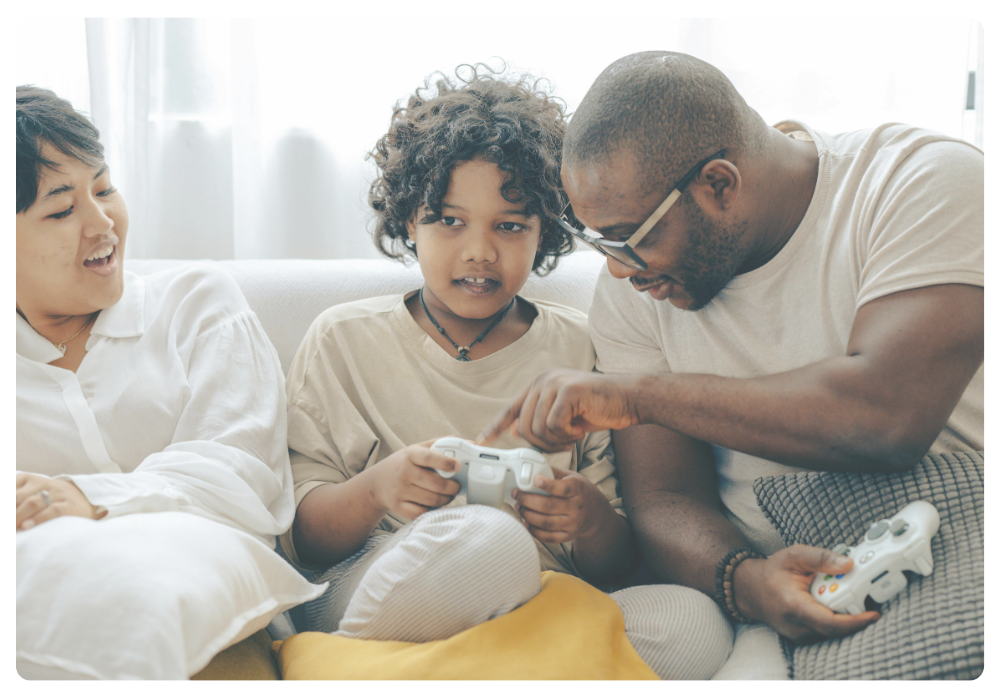



 Copy Link
Copy Link
 Share
to X
Share
to X
 Share
to Facebook
Share
to Facebook
 Share
to LinkedIn
Share
to LinkedIn
 Share
on Email
Share
on Email


